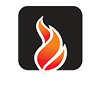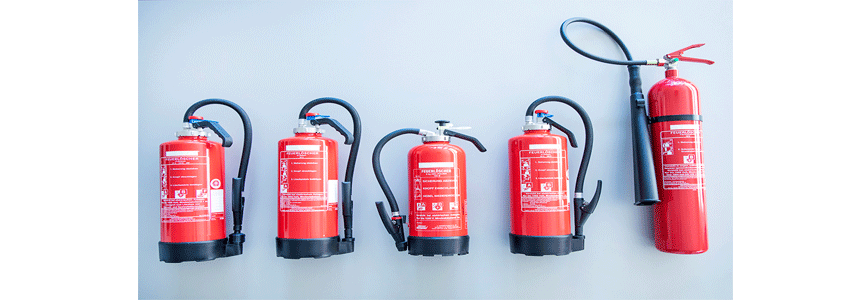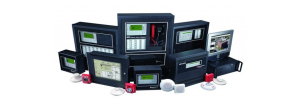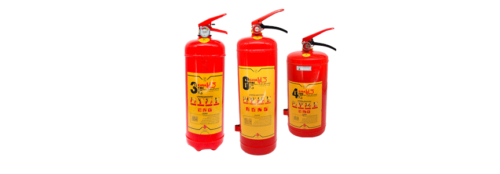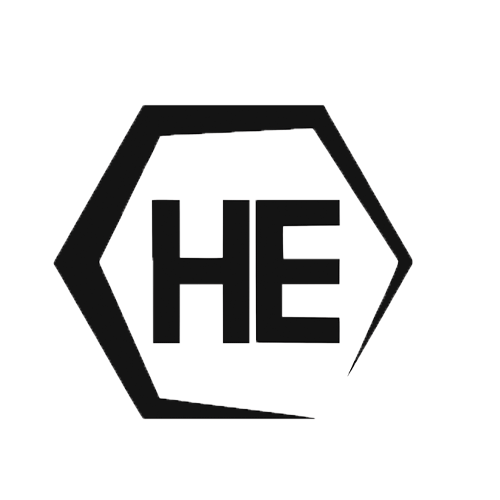Fire extinguisher
Portable fire extinguishers are designed to be easily used for small and controllable fires.
In order to use these capsules, you should pay attention to the sticker on them, because information about the used capsule is written on these stickers. Each capsule is specially designed to extinguish a certain type of fire, and it is possible to use them incorrectly. cause the fire to flare up and cause irreparable damages. The installation location and accessibility of these capsules is another important point that should be taken into consideration.
It should be ensured that these capsules are installed in visible and accessible places, with accurate physical checks, and are provided to people who are familiar with their use. Standard (National Fire Protection Association) ) did not consider the presence of a fire engineer or inspector to monitor portable fire extinguishers monthly or annually, but their maintenance and care as well as repairs must be done by the owner, residents or specific representatives. It is better to repair and maintain these capsules by a fire department representative or someone trained in safety.
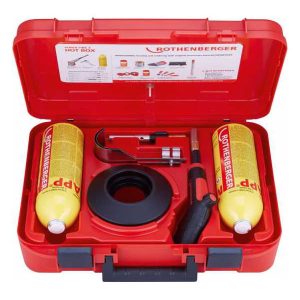
How to work with a fire extinguisher?
First, identify the fire so that you can use the label on the capsules to choose the right capsule to extinguish the fire. After moving the capsule to the fire place, perform the following operations in order:
1. Pull the latch rod.
2. Place the end of the capsule hose towards the fire.
3. Press the handle.
4. Place the capsule hose towards the center of the fire
Marking systems
The cases of use and non-use of a capsule from a fire extinguisher are determined by the label on the capsule. Visual signs are easily used and understood by everyone. Of course, letter punctuation marks can also be used in these cases.
Testing and monitoring capsules:
Fire extinguishers must be inspected during installation and every 30 days thereafter. For inspection, the following points should be noted:
Sufficient availability and visibility:
The presence of practical instructions on the plate containing the name of the capsule legibly and in such a way that the plate is placed on the outside.
The safety seal and all related indicators are healthy and intact. The fullness of the capsule is determined by weighing the capsule.
The absence of physical damage such as corrosion, leakage or clogging of the pressure level nozzle and its indicator should show the applicable pressure range.
Detailed inspection of wheels, tires and carts (for wheeled capsules, hoses and nozzles on adhesives, hazardous materials identification system (hmis) must be installed on site.
If, after the inspections, there are defects regarding the location of the access, problems related to the label of the capsule specifications, and so on. . . It was observed that the defects should be corrected as soon as possible
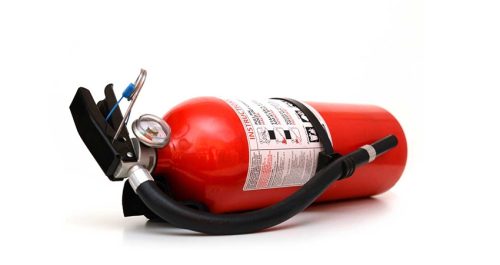
Fire extinguisher components
Fire extinguishers are one of the most important fire extinguishing tools that are installed in all buildings and commercial centers. In addition to knowing how they work and how to use them during a fire is very important, knowing the components of a fire extinguisher will make you more familiar with it, as a result of which you can choose the best extinguisher according to the environmental conditions. In addition, it is possible to visit the parts while charging the capsule so that they can be replaced in case of failure. As a result, by knowing a fire extinguisher, you can get the most out of it in times of need.
While there are many different types of fire extinguishers such as CO2, water and foam, dry chemical, powder and gas extinguishers, etc., in most cases, they have the same or very similar parts that can be used with them. to work
In general, regardless of the class of extinguisher and the type of extinguishing agent they may contain, you can expect a fire extinguisher to have the following components: cylindrical tank, poppet, handle , lever, pin, pressure gauge, discharge hose, discharge nozzle, instruction label, monthly inspection label, annual inspection label, extinguishing agent and propellant are among the parts that are necessary to know in its correct use during a fire. Each of these parts plays a vital role and some of them work together to make an extinguisher perform its main function.

The role of each part
While there are many individual parts, each part fits into one of three main roles: storing, extracting, or informing.
Cylindrical tank:
The tank of each fire extinguisher is responsible for keeping the extinguishing agent and propellant under the correct pressure. Typically made of steel, even small tanks can be surprisingly heavy.
Valve assembly:
The parts of the fire extinguisher components that are responsible for the act of extracting the extinguishing agent together are known as the valve assembly. These sections include the following:
Valve: It is responsible for controlling the flow of the extinguishing agent, the valve or valve is a mechanism that connects the handle and the operating lever.
Carrying Handle: Simply put, the handle makes it easy to grab, lift and carry the extinguisher.
Operating lever: A lever is a piece of metal that can be pulled or pushed to activate the extinguisher. However, the operating lever cannot be pulled or compressed unless you first remove the pin.
Pin: This part, also known as a locking pin, is placed in the valve part of the fire extinguisher and prevents it from being accidentally discharged (for example, accidentally pushing the trigger down when you just want to carry the extinguisher out. you have to another place)
Pin Retainer: This plastic piece is included to prevent the tension pin from accidentally falling out.
Pressure Gauge: The pressure gauge is a small circular gauge that is attached to the outside of the valve and valve assembly to indicate whether the fire extinguisher has adequate pressure to expel the extinguishing agent in the event of a fire. If the flash is on green, it is charged properly. If it is green on the left side, it is low on charge and will not have enough pressure to function properly. If the gauge needle is green on the right, it is overcharged and there is a risk of explosion. C02 extinguishers do not have a pressure gauge.
Discharge Hose: The discharge hose is the hose that allows the extinguishing agent to move from the tank to the base of the fire, enabling the user to target the flow of the agent.
Discharge nozzle: The nozzle is the conical end of the hose from which the extinguishing agent is dispersed.
Information sections of fire extinguishers
In addition to these functional elements of the fire extinguisher, there are also information sections that include:
Instruction Label: All properly functioning fire extinguishers must have a legible instruction label on the extinguisher container that provides instructions for its proper use as well as the type of fire being used.
Monthly Inspection Label: This label allows the owner or monthly inspection officer to record the date of the monthly inspection as well as the name of the company or expert who inspected it.
Annual inspection label: The company that charged the capsule records the date and necessary information on this label. This label will include company specific codes to ensure that the extinguisher has received the care it needs to function properly when needed.
And of course, if the fire extinguisher had no extinguishing agent (that is, the chemical substance or substance stored inside the tank that extinguishes the fire) and propellant (that is, the gas that causes the extinguishing agent to be expelled), none of the labels The above will not be repaired or replaced with a new capsule after charging.
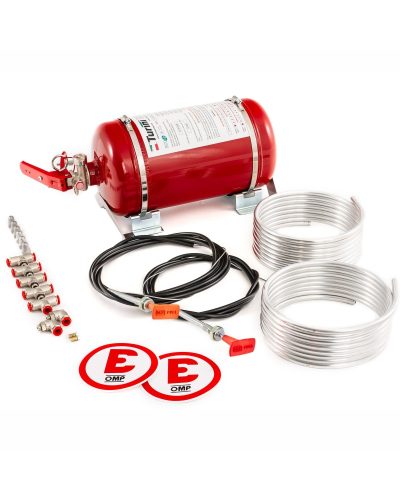
Considering the dangers of fire and the increase in casualties related to it in recent years, as well as due to the lack of knowledge in the correct use of fire extinguishers, we felt it necessary to describe the types of fire extinguishers.
There are different types of fire extinguishers:
1. Water and foam capsules
Water and foam capsules extinguish the fire by eliminating the elements of the fire triangle. The foam also separates the oxygen element from the other elements. Water canisters are for Class A fires only – they should not be used on Class B or C fires. The discharge flow can spread the flammable liquid in a Class B fire or it can double the fire hazard in a Class C fire. In order to know more about this capsule model, you can refer to the article entitled Water and foam fire extinguisher.
Water and foam extinguishers are suitable for use on Class A and B fires. Water and foam fire extinguishers, especially for use on wood, paper and textile fires, cool the flame by evaporating the water in the foam. The capsule is adept at dealing with flammable gases because the foam creates a barrier between the flame and the fuel.
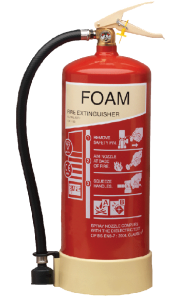
Another good feature of the water and foam fire extinguisher is that it is non-toxic and does not harm most materials. It has a spray nozzle that covers a wide area when used and successfully extinguishes the flame within seconds.
How do water and foam capsules work?
Foam extinguishers are a quick and powerful means of dealing with flammable liquids. They do this by creating a floor covering that suffocates the fire and reduces the oxygen supply to the fire, ultimately preventing re-ignition and flame growth.
Where are water and foam capsules more suitable for use?
Water and foam extinguishers are very popular for homes, apartments, cars and boats.
Also, their suitability for use on Class A fires, which include wood, paper and textiles, has made their use common in offices.
Small size water and foam fire extinguishers are suitable for use in cars and other vehicles because they are small and compact and can be installed easily and quickly by a bracket.
How to identify a water and foam capsule?
Foam fire extinguishers are easily identified by a cream-colored label, as seen in the image below. The main body must be red to meet NFPA standards and must have a large cream banner at the top of the front of the capsule with the word “Foam” written in red on it.
Old water and foam fire extinguishers have a completely cream colored body. These no longer meet NFPA standards and environmentalists mandate that their use be discontinued.
2. Carbon dioxide capsule
This capsule model extinguishes the fire by eliminating the oxygen element of the fire triangle. They also dissipate heat by discharging very cold. Carbon dioxide can be used in Class B and C fires. These models are usually ineffective in Class A fires.

3. Capsules of dry chemicals
This capsule model extinguishes the fire by stopping the chemical reaction of the fire triangle. Today, the most widely used type of fire extinguisher is multi-purpose dry chemical, which is effective in class A, B and C fires. This agent also works by creating a barrier between the oxygen element and the fuel element in Class A fires. Conventional dry chemicals are for Class B and C fires only. It is important to use the correct capsule according to the type of fuel! You should know that using the wrong capsule can cause a fire that has been successfully extinguished to rekindle. If you know more details about this product, you can refer to the dry chemical powder capsule article.
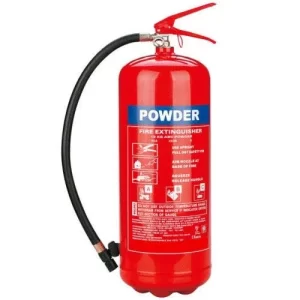
4. Wet chemical capsules
Wet Chemical is a new agent that extinguishes fire by removing the heat of the fire triangle. This capsule prevents re-ignition by creating a barrier between oxygen and fuel elements. Class K wet chemical canisters were developed for modern, high efficiency deep fat frying fires in commercial cooking operations. Some of them may also be used in commercial kitchens and in Class A fires.
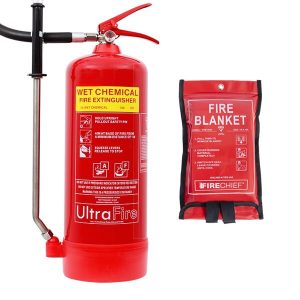
5. Capsule with cleaning agent
Halogen or cleaning capsules contain halon materials as well as newer halocarbon agents. The advantage of this capsule model is that less ozone is lost and the fire is extinguished by stopping the chemical reaction or removing the heat from the fire triangle. Clean agent extinguishers are effective on Class A, B and C fires. Small handheld capsules are not large enough to be rated 1A and are only rated for Class B and C.
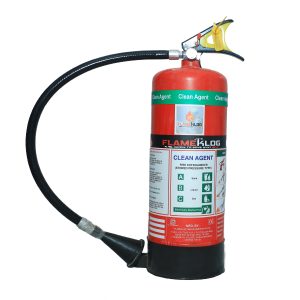
6. Dry powder capsules
Dry powder capsules are similar to dry chemical capsules. The difference between them is that in this model, they extinguish the fire by separating the fuel from the oxygen element or by removing the heat element of the fire triangle. However, dry powder capsules are only for Class D or combustible metal fires. They are ineffective in all other categories of fire.
Dry chemical powder (DCP) fire extinguishers are one of the most common fire extinguishers. The reason for this is their ability to deal with different types of fire, their effectiveness in extinguishing fire, as well as the low cost of DCP fire extinguishers. DCP fire extinguishers are easily identified by the white band around the fire extinguisher cylinder near the top. These capsules must have a label if they are installed in the building. This label specifies which type of fire the dry chemical canister is used for.
Types of capsules containing dry chemical powder
Currently, there are two types of fire extinguishers containing dry chemical powder. Both of these capsules are ABE and BE extinguishers. The most common type is known as ABE chemical powder fire extinguisher. ABE is derived from the fire classes (classes B, A and E) that this extinguisher is effective against.
The second type of dry chemical powder fire extinguisher is known as BE dry chemical powder fire extinguisher. This term is again derived from the fire classes that this extinguisher is effective against (classes B and E.BE). Chemical powder fire extinguishers type B and E. BE is much less than ABE type. Both types of chemical powder extinguishers have a white bar with different descriptions.
Uses of dry chemical powder capsules
As mentioned, fire extinguishers containing dry powder are very effective and efficient. This capsule is used for the following types of fires.
ABE type capsules:
Class A fire: paper, cardboard, wood, cloth, people, etc
Class B fire: flammable liquid fire, gasoline, diesel, oil, etc
Class E fire: electrical fires, computers, photocopiers, switchboards, etc
BE type capsules:
Class B fire: flammable liquid fire, gasoline, diesel, oil, etc
Class E fire: electrical fires, computers, photocopiers, switchboards, etc
Class F Fire: Although not included in the rating, the BE type is also capable of extinguishing fires caused by cooking oil.
Both types of dry chemical powder extinguishers can be used on fires caused by flammable gases. But the situation should be carefully examined and evaluated. Because burning gas causes gas loss, if the fire is extinguished and the gas leak continues, its accumulation poses a great danger because it will act like a bomb if it is re-ignited. To know the types of fire classes, you can refer to the types of fire.
How dry chemical powder capsules work
All fire extinguishers work by removing one or more elements of the fire triangle (heat, fuel, and oxygen). The dry chemical powder used in most ABE fire extinguishers is monoammonium phosphate. This powder has the ability to melt and flow after heating, which allows the agent to contain the fuel and extinguish the fire (especially Class A and E fires). In Class B fires, the powder smothers the surface of the fire and destroys the vapor (fuel), thus extinguishing the fire immediately. Flammable liquid fires generally do not store much heat in the fuel source, so the powder does not normally melt.
Type BE dry chemical powder extinguishers are ineffective against Class A fires as they do not melt on the fuel surface. As a result, they are given the grade of BE.
Advantages of dry chemical powder capsules
This category of fire extinguishers has the following significant advantages:
It can be used in different types of fire.
They are very powerful in extinguishing fire and extinguish the fire quickly.
Compared to other fire extinguishers, they have a more suitable size.
They have different sizes and ratings.
They are very affordable.
They can cover large areas of fire.
Due to their high variety and versatility, they can be used and safe in electrical fires.
Disadvantages of dry chemical powder capsules
This category of fire extinguishers also has the following limited disadvantages:
Due to the powder contained in it, cleaning the place after extinguishing the fire will be difficult and extensive.
The resulting dust can affect sensitive equipment such as computers.
When used in closed spaces, it reduces visibility to almost zero. Always know where the outlet is before use!
Powder can make breathing in closed spaces almost impossible.
Although all fire extinguishers must be refilled or replaced after use, dry chemical extinguishers lose pressure quickly, even if they are activated in a fraction of a second. This is because the powder gets stuck in the valve and allows the pressure to leak.
In case of lack of service or proper service, dry chemical powder can settle at the bottom of the fire extinguisher and get compressed. This causes the powder to not discharge completely or correctly when used.
How to use dry chemical powder capsules
Dry chemical powder fire extinguishers are used in the same way as most fire extinguishers. You just have to remember the PASS principle when using these capsules!
P: Pull the pin.
A: Put the nozzle in the fire
S: Press the knob.
S: Move from side to side.
7. Water vapor capsule
The water vapor capsule is a recent development that extinguishes the fire by removing the heat element of the fire triangle. This capsule model is an alternative to capsules with cleaning agents, whose contamination is a concern. Water vapor canisters are primarily for Class A fires, although they are also safe to use on Class C fires.
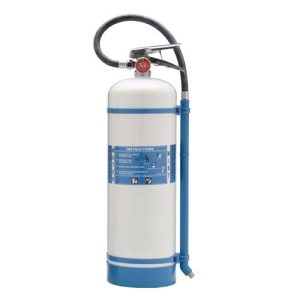
8. FE-36 fire extinguisher
This fire extinguisher has proven to be a standard cleaning agent in portable fire extinguishers. FE-36 produces very few toxins and has no ozone depleting potential.
In a portable fire extinguisher, FE-36 is discharged as a stream of gas and liquid droplets that penetrates the heart of the fire and stops the combustion process through heat absorption and chemical interaction. FE-36 extinguishers have been tested to BS EN3 and achieved ratings of 5A 55B C and 8A 70B C. FE-36 is also used in local application systems.
The most important advantages of FE-36 are:
1. Safe for people.
2. Can be used for car engine compartment fires.
3. A clean agent that leaves no residue.
4. It works well at room temperature.
5. Electrically non-conductive, non-corrosive and without thermal shock.
Fe36 fire extinguisher is special for server room, sensitive areas, electronic and very important equipment.
9. Beversal fire extinguisher
Bioversal extinguisher with the ability to enclose hydrocarbons extinguishes the fire in such a way that during operation and after operation, any extinguished area will not have the possibility of re-ignition. Bioversal is formulated as a concentrate and diluted with water, so it has wide operating capabilities.
Bioversal is environmentally friendly, non-destructive for humans and preserves the habitat of plants, animals and living microorganisms in nature and prevents any corrosion and damage to facilities and equipment. Unignited gases prevent dangerous backdraft phenomena in large fires and ensure the safety and health of firefighters.
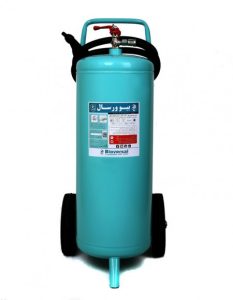
How to choose a suitable fire extinguisher?
1. To choose a suitable capsule, several points should be considered
2. Things that caused fire in the environment
3. Intensity of fire and speed of fire propagation
4. Suitability of capsules for existing conditions
5. Easy to use
6. Availability of people familiar with capsule work
7. Environmental conditions, including temperature, wind, air flow, presence of dangerous vapors, etc.
8. Issues related to health and safety of use
9. The need to maintain and protect the capsule
Determining the size, method and place of installation of fire extinguishers:
The National Fire Protection Association of America determines the minimum number of capsules required in a place based on the type of possible fires.
Type A: Residential volume: low, medium, high / minimum amount of single capsules 2AY/2-AY4-A maximum area per capsule unit 3000/sq ft 1500 1000:
Maximum area for each capsule: 11,250 11,250/sq ft 11,250: Maximum moving distance for each capsule: 15 ft 75 75 To meet the requirements of a 4-A capsule, a two-and-a-half-gallon blue capsule can be used. The safety of Pashan Kian industry
Type c: As mentioned before, type c capsules are used when a fire occurs in electrical equipment and a non-conductive material must be used.
Since the fire itself must be classified in types a or b, the capsules themselves must also be sized and installed based on the standards of type a and b.
Type D: Fire extinguishers or extinguishing agents used for this purpose, should not be carried more than 75 feet away from the fire. The safety of Pashan Kian industry.
دیدگاه خود را با ما در میان بگذارید
